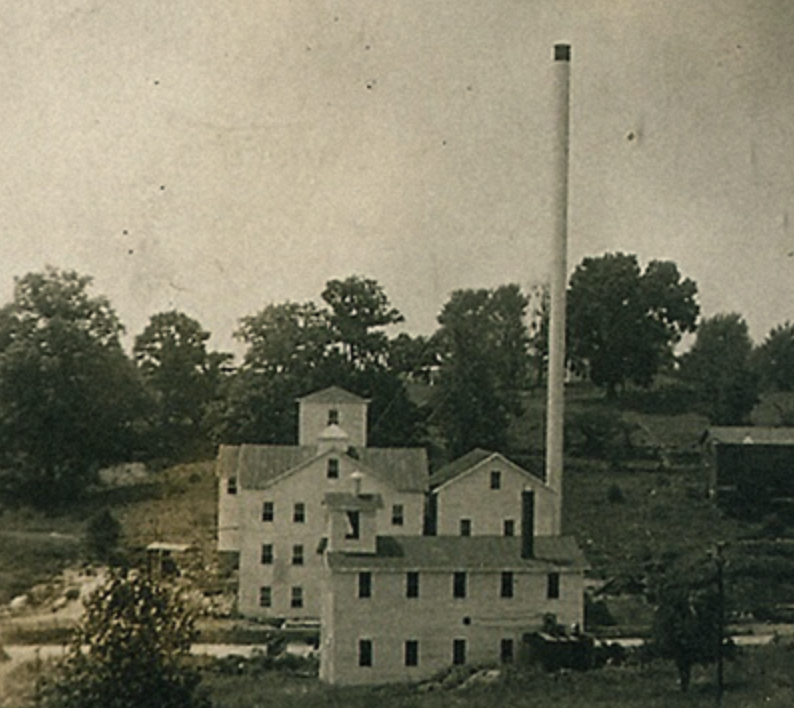
Thomas S. “Tom” Moore
Thomas S. Moore was born in March of 1853 in Nelson County, Kentucky, to Charles A. and Catherine Ann Moore. The Moore family was descended from an Irish family who had come west to Kentucky looking for a farm that was both fertile and inexpensive, unlike back east. They moved to Bardstown, Kentucky, where the first Catholic diocese west of the Appalachian Mountains had been founded.
His father died when Tom was only eleven years old, so he had to drop out of formal schooling and join the workforce to help support his family. In 1870, he lived with his widowed mother, a brother, and two sisters, one of whom married a man named Charles Willett. The Willetts were, at that time, among the oldest families in the Kentucky whiskey business and were extremely wealthy.
Above is an AI-generated photograph of Thomas S. “Tom” Moore, based on a lithograph of Moore in about 1900.
“Whiskey Entrepreneur”
His mother Kate died in 1872. In 1874, Moore married 18-year-old Mary Virginia (Jennie) Collings. That same year, Tom went to work for the Willett family in its distilling business. There, he met another new employee, Ben Mattingly; they would go on to work closely together for years. Soon Ben fell in love with one of the Willett sisters and married her.
The leader of the Willett empire was John D. Willett, who owned a Louisville company called Willett & Frenke. That company operated a distillery at Morton’s Spring, just south of Bardstown. In 1876, Willett signed over ownership interest of the Willett & Frenke distillery to Tom and Ben, who operated the facility under the new name “Mattingly and Moore”.
The duo made Mattingly & Moore bourbon, along with Belle of Nelson (named for John Willett's winning race horse), and Morton’s Spring Rye, named after the limestone source which provided the water used to distill their whiskey.
In 1891, Moore’s longtime partner Mattingly abruptly sold his majority share in the company to a group of investors. Tom Moore continued to work with the new company for eight years until 1899, when he tired of his new overlords and bought 116 acres adjacent to the Mattingly distillery. There, he built his own brand-new distillery. At this new facility, he produced, fittingly, Tom Moore Bourbon, as well as the Daniel Boone and Eleven Jones whiskey brands. Initially, the plant could mash 100 bushels of grain daily and thereby produce ten barrels of whiskey a day. The distillery buildings were frame construction with a fire-resistant roof, surrounded by five warehouses. Some of those warehouses were made of brick, stone, or iron-clad walls, but Moore insisted that they all had fire-resistant roofs.
By 1900, Tom and Jennie had six healthy children: Mary, Alice, Cornelius, Thomas, Margaret, and Lawson. As each of the Moore boys grew into teenagers, they would be expected to work in the business and assist the distillery managers. In 1916, investors who had financed the Mattingly & Moore distillery next door, which Tom had resigned from, went bankrupt, and the distillery was acquired by a Louisville company that was its chief liquor distributor. Tom Moore was later able to acquire the property and incorporate it into his own distillery, tearing down the old buildings himself.
Throughout these years, the Moore distillery flourished as Tom Moore bourbon and his other whiskeys gained a national following. Moore’s wealth then allowed him to purchase and operate The Old Talbott Tavern in Bardstown, which was built in 1779 and remains the oldest standing western stagecoach stop in America.
Thomas S. Moore, age 67, maintained leadership of the company until it was closed by Prohibition in 1920, when he finally retired. Tom lived to see Prohibition repealed in 1934, and at that time, he and his son, Cornelius (“Con”), rebuilt and expanded the original distillery, giving it a new mashing capacity of 2,400 bushels. Three new warehouses were then constructed, which had the capacity to store a total of 50,000 barrels.
Tom Moore died in 1937 in Bardstown at the age of 84 from bronchial pneumonia and was buried in St. Joseph Cemetery beside his wife, Jennie. In 1944, Tom’s son Con sold the distillery to Oscar Getz, a Chicago liquor merchant. Getz quickly changed the name to the Barton Distillery, a name which he randomly picked from several choices in a hat. That distillery is now known as Barton/1792 Distillery.
A bourbon that honors the original founder of the Barton/1792 Distillery
Contributed by Colonel CRaig Duncan, Columbia, Tennessee





